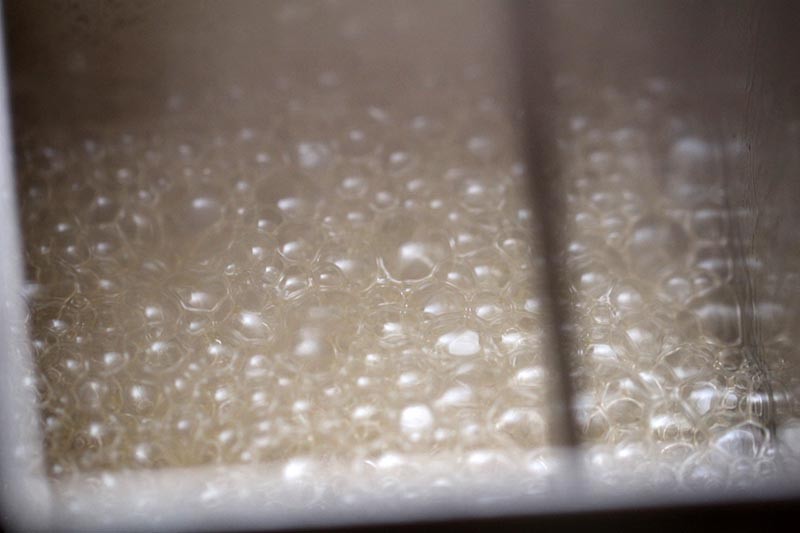We boiled our first sap of the year on February 21, and once it started, it ran pretty consistently until last Wednesday. By March 1 we’d made half a crop; we’re now at about 60 percent. That’s by far the most syrup we’ve ever made in February. As a point of comparison, last year we made no syrup in February and 73 percent of our crop in April. The year before that, 0.5 percent of our syrup in February and 76 percent in April. Now the season came later than “normal” both those years, but it gives you a good illustration of how the very notion of normal hasn’t been applicable in the recent past, if it’s ever been applicable.
The talk among sugarmakers around here is that the sap hasn’t been very sweet. The sugar content of our February sap averaged around 1.8 percent, though one sugarmaker I spoke to still hasn’t gotten above 1.5. Last year during the heart of the season we were at 2.5, meaning it’s taken 30 percent more sap this year to make an equivalent amount of syrup. Why? Maybe the trees were unable to build good starch reserves because of the dry, late-summer weather. Maybe it’s just too early and the sugar content will eventually rise.
Of course, that’s assuming we’ll have a season in March. If we look again at the recent past, the season in 2012 ended for us on Saint Patrick’s Day. My family has been sugaring since the 1950s, and though we’ve only been keeping good records for the past 20 years, a March 17 end date seemed unprecedented then. There’s a chance, though, that this year might make the 2012 season look long. I’m looking at a 15-day forecast as I write this, and it has the weather around here going up to 50 degrees on Monday and then not freezing through March 17. If that happens, we won’t make any syrup. Sap runs in maple trees are dependent on freeze/thaw cycles – if it doesn’t freeze, nothing happens. This in contrast to the sap some people collect from birch trees in late spring, when a run isn’t predicated on a freeze.
If we really have 10 straight days of temperatures in the 50s and 60s, I’m not sure the season will come back even if it gets cold again. The microorganisms that occur naturally in tapholes, spiles, lines, exist at rates of about 1,000 per milliliter of sap at the beginning of the season. After an extended stretch of hot weather, microbial loads may be as high as one trillion per milliliter. This kills the grade of the syrup and leads to off flavors. The microbes also create a coating of slime on a taphole, which can reduce or eliminate sap flow. If the trees did run again after such weather, flow rates and the flavor profile of the sap would almost certainly be affected.
Of course, we still might be alright. Weather is hard to predict more than a few days out, and if the lows of 35 degrees that the models are predicting turn out to be lows of 30 degrees, we still might get some good runs and end up having a solid year. And, of course, weather that’s just a little too warm for sap in southern Vermont often means perfect sap weather in northern New England and Canada, so sugarmakers up there are probably getting ready for a deluge.



Discussion *